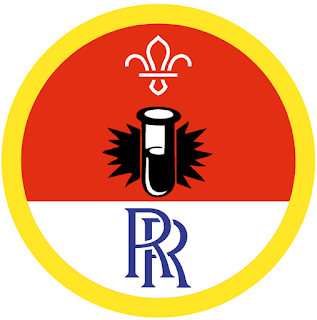Scouts and Explorers: Playing to the gallery
An old adage states that ‘a picture is worth a thousand words.’
You will need
- Camera or
phone
- Example
photographs
- A way to
print photographs
- Photo
displays fixtures (e.g. sticky tack, string)
Before you begin
·
Decide whether you’ll use a camera or smartphone
for this activity. Smartphone cameras often have easy-to-use editing features,
which are ideal for this activity, while photos can easily be printed or
displayed digitally.
·
Choose whether you’d prefer to take 12 colour
photographs in various styles or six black-and-white photos. If shooting in
colour you should use two of the following techniques: portrait, still life (or
similar), land- or seascape, sport (or other action) and time-lapse. If
shooting in black and white you should explain how you did this and why you
chose this effect.
Run the activity
1. Think about
a theme that you’d like to focus on for your photographs. The theme should tie
together the shots, even if you’re of different objects and places.
Think about your
theme carefully. The right theme could help the photos to tell a story for the
audience, or prompt them to think about a certain subject. Look at following
examples: Steve McCurry is a famous photographer who uses contrasting colours
as a theme, often in photos of people. Perhaps his most famous work is The Afghan
Girl, which shows an Afghan refugee with green eyes and a red
shroud. The photograph deals with war, features a human portrait and draws
attention through its colour scheme – three themes that feature in much of
McCurry’s work. Another example of recurring themes can be seen in photographs
by Cindy Sherman. Her work is solely made up
of professional self-portraits, like a collection of selfies. Her photos often
feature her dressed as different characters, sometimes using clothing that used
to belong to other people.
2. Look for
examples of famous photographs or photographers who have one clear theme in your
work. These may be from any era. Think about why the photo is famous and why it
made a splash when it was taken.
There’s
often a story behind a famous photo. It might help those taking part to think
about important events to help them come up with a theme. Thoughts and feelings
from the event should be captured in the photos to show people what it was
like. An example of this could be the fun of Scouts activities, all featuring a
Scouts scarf.
3. Now, you
should have one idea or feature that will appear in all your photographs. You
should know what kind and how many pictures you’re taking, and what device you’re
using to take them. Before you start shooting, make sure you’re familiar with your
device and know how the functions work. You should also be advised on looking
after your devices while taking your pictures, and demonstrate this in your
work.
4. Everyone
should shoot your photographs and bring all your snaps with them to the meeting
place. This should include photos that don’t look so great. Discuss image,
light or technical issues as a group to help resolve them.
To help you
recognise faults with photos work through the ‘Tour with Dora’ worksheet.
5. When you’ve
chosen your favourite photographs, use them to create a display. Hang your
shots together so that the chosen theme is clear. Each exhibit should include
at least two images that have been edited. Each edited photo should have a
short explanation of why and how this has been done.
Try to find
a responsible way to display the photos. Reusable sticky tack or fixings are a
good option, as is recyclable washi tape. You could also frame and suspend
pieces with string. You could also create a digital display.
6. If you wish,
you could give the display pieces titles and descriptions for the benefit of
the audience.
Reflection
In this activity, everyone
used photography not simply to take a pretty picture, but to tell a story. Why
do photos express things more vividly, or in greater detail, than words? How
did everyone make use of photography to show something you couldn’t show with
words?
This activity completes:
Scouts
Photographer Activity Badge – option 1
Explorers
Creative Arts Activity Badge – requirement 2







